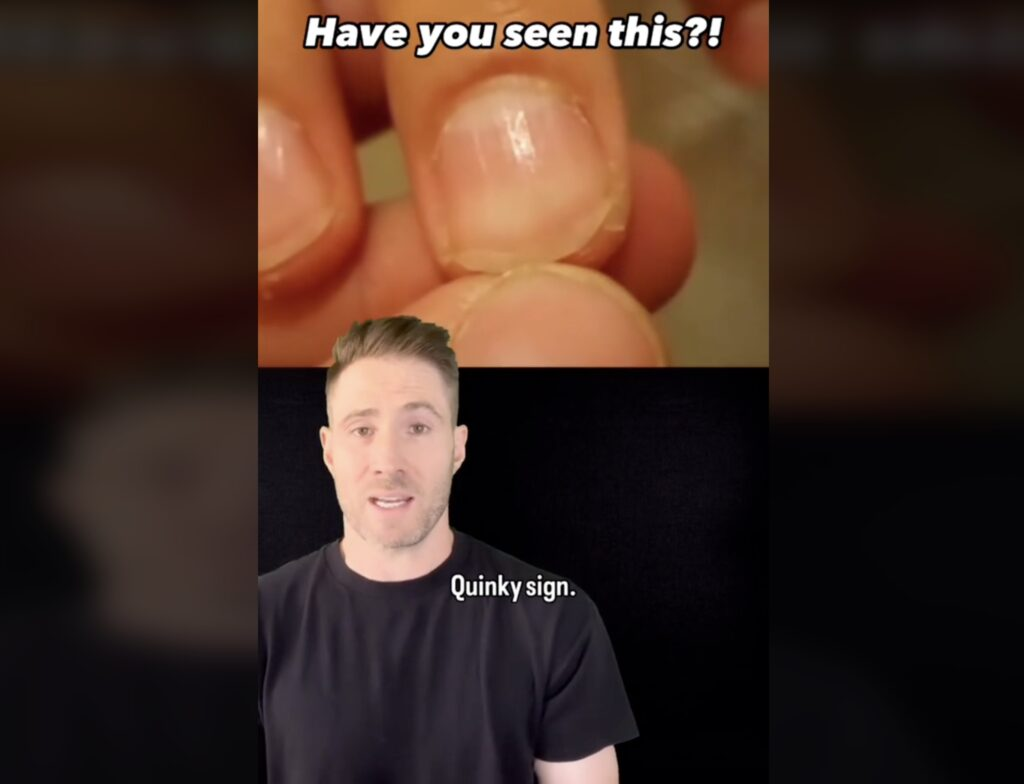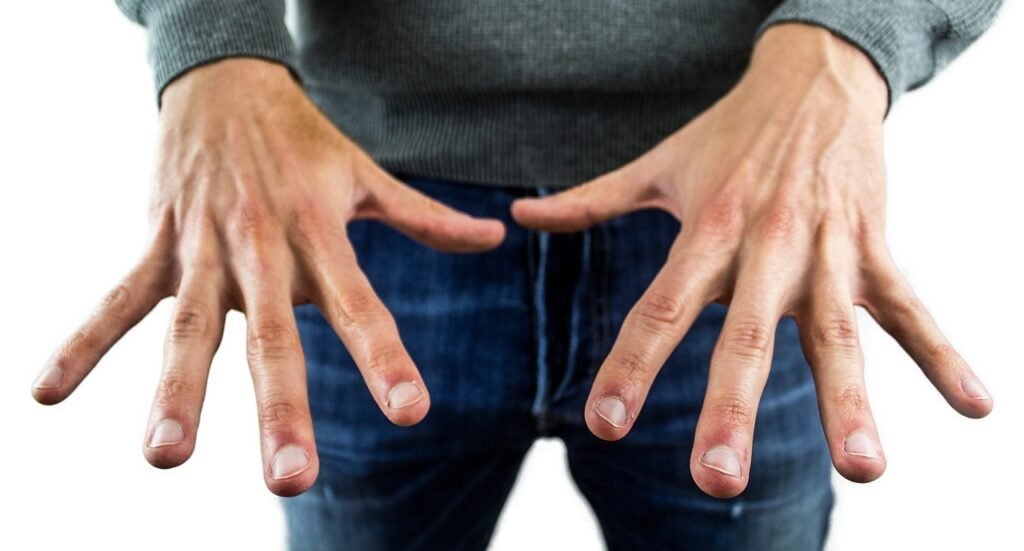Our bodies often give us small, subtle signals when something is wrong, and one of these warnings might lie within your fingernails. Dr. Joe, an emergency response medic from the United States, recently revealed on TikTok that pressing on your fingernails and observing a red pulsation could be an indication of a heart condition known as aortic regurgitation. This condition, if left unchecked, could lead to serious health complications, including sudden death. Let’s explore what this means, how it works, and why you should take it seriously.
What Your Fingernails Reveal About Your Heart Health

Fingernails can offer insights into your cardiovascular system that may not be immediately obvious. One specific sign of concern is known as the Quincke fingernail sign, which could signal aortic regurgitation. This heart condition occurs when the aortic valve in your heart doesn’t close properly, causing blood to leak back into the heart’s left ventricle. Over time, this puts extra strain on the heart, forcing it to pump harder to compensate. While the heart initially adapts, the continuous effort can weaken it, leading to serious complications.
The Mechanics of Aortic Regurgitation
Aortic regurgitation results when the aortic valve fails to close tightly, allowing blood to flow backward into the heart rather than moving out to the rest of the body. Normally, the heart pumps blood in a one-way direction, but when this valve malfunctions, blood leaks, which over time can cause the heart to enlarge and thicken as it tries to handle the increased volume of blood.
In its early stages, aortic regurgitation may not present any symptoms, making it difficult to detect without medical screening. However, the Quincke sign, visible through your fingernails, offers a non-invasive clue that something might be wrong.
What Causes Aortic Valve Regurgitation?
Aortic valve regurgitation can stem from several underlying conditions. Some people are born with a bicuspid valve, where the aortic valve has only two cusps instead of the usual three. This genetic condition increases the likelihood of valve malfunction later in life. Other causes include:
- Aortic Stenosis: This condition involves a narrowing of the aortic valve, often caused by calcium buildup. The narrowing increases pressure on the valve, eventually leading to leakage.
- Endocarditis: This infection affects the inner lining of the heart’s chambers and valves, potentially damaging the aortic valve.
- Rheumatic Fever: Though rare in modern times, rheumatic fever, a complication of untreated strep throat, was once a leading cause of aortic valve damage.
Other contributing factors include Marfan syndrome, a connective tissue disorder that can cause the aorta to enlarge, as well as immune conditions like lupus.
The Quincke Fingernail Sign: What to Look For
The Quincke sign, named after Dr. Heinrich Quincke, a German physician who identified it in 1868, is characterized by pulsations visible at the nail bed. To check for it, press down lightly on the tip of your fingernail and release. Under good lighting, observe if the nail bed shows rhythmic pulsations, alternating between redness and paleness. If you notice this phenomenon, it could be a sign of increased pressure in your arteries and may indicate aortic regurgitation.

While this sign can be observed at home, it should not be considered a definitive diagnosis. If you see this sign, it is a good idea to consult a doctor to rule out any underlying heart issues.
Who Is at Risk for Aortic Regurgitation?
While aortic regurgitation is a somewhat common condition, it usually affects older adults. Men between the ages of 40 and 60 are the most commonly diagnosed group, but the condition can affect anyone. Studies estimate that 1 in every 20 people suffers from some form of aortic regurgitation, although the symptoms can be mild and may not require treatment for many.

However, in more severe cases, symptoms may become life-threatening. In the UK alone, approximately 1.5 million people over the age of 65 have some form of aortic valve disease, and early detection can significantly improve treatment outcomes.
Symptoms of Severe Aortic Regurgitation
While aortic regurgitation often develops gradually, it can escalate suddenly due to infection or trauma. Symptoms to watch out for include:
- Shortness of breath, especially during physical activity or while lying down
- Fatigue and weakness, particularly after exercise
- Irregular or rapid heartbeat (palpitations)
- Chest pain or tightness, especially during exertion
- Lightheadedness or fainting
- Swelling in the ankles and feet
If you experience any of these symptoms along with the Quincke fingernail sign, it’s important to see a healthcare provider immediately.
Diagnosing Aortic Regurgitation

Aortic regurgitation is typically diagnosed through a combination of physical exams and imaging tests. After discussing your symptoms, a doctor may listen to your heart for abnormal sounds or murmurs. Further tests, such as an echocardiogram, may be conducted to visualize the structure and function of your heart.
Treatment Options
If aortic regurgitation is detected early and symptoms are mild, your doctor may recommend monitoring your condition with regular check-ups. In more advanced cases, medications may be prescribed to manage blood pressure and help the heart work more efficiently.
For severe cases, surgical options may be necessary, including aortic valve repair or replacement. The decision to undergo surgery depends on the severity of your symptoms and the overall health of your heart.
The Bottom Line on the Quincke Fingernail Sign

Your fingernails could provide an important clue about your heart health. The Quincke sign, while subtle, may indicate the presence of aortic regurgitation—a condition that can lead to serious health risks if left untreated. If you notice pulsations in your nail bed, or if you’re experiencing symptoms such as shortness of breath, chest pain, or fatigue, don’t hesitate to consult your doctor. Early detection and treatment could be lifesaving.
Remember, while the Quincke sign offers an easy way to spot potential heart issues, it’s not a replacement for professional medical advice. Always seek out a healthcare provider for a thorough evaluation and appropriate treatment.


